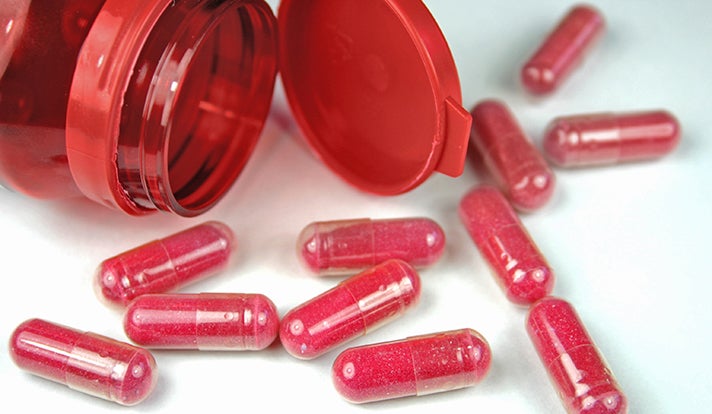
Cranberry Capsules
I sat at the bedside of my patient, Mrs. C., a frail and debilitated woman in her late 80s. She was hospitalized for the fourth time this year for urinary tract infections, known as UTIs. Mrs. C’s daughter told me that she started taking cranberry capsules herself to prevent UTIs. She asked: Would it help my Mom to take cranberry juice or capsules too?
I’ve been asked this question many times by family members of older women. Four years ago, my colleagues and I started a clinical trial to answer it.
Over 4 million Americans, mostly women, are admitted to or live in nursing homes each year. Up to 70 percent receive antibiotics annually, most commonly for UTIs. Incontinence and disability predispose these women to developing UTIs. A UTI diagnosis leads to multiple rounds of antibiotics, side effects, and hospitalizations. People are desperate to find something simple and harmless to interrupt this cascade of events. Often, they turn to cranberry products.
Are cranberries really a health powerhouse, or are the healing powers of cranberries just a myth? Native Americans used cranberries for thousands of years before early settlers used them to prevent vitamin C deficiency. Since the early 1900s, Americans have used cranberries as a folk treatment for UTIs. A key cranberry ingredient, proanthocyanidin, or PAC, prevents the common E.coli from attaching to the bladder wall. A 1994 Harvard study showed that older women who drank 10 ounces of cranberry juice with 36mg of PAC had less bacteria in their urine compared to placebo. Since then, the availability of cranberry products in the U.S. market has substantially grown. There are food products but also products promoted for urinary health, including capsules, tablets, and powders. Some are even promoted for pet health.
Studies of cranberry juice have been ongoing for over 20 years, but few have had promising results. In 2011, 16 ounces of cranberry juice did not prevent a second UTI in a study among healthy college women, and a subsequent Cochrane Review concluded that cranberry juice does not prevent UTIs. Some have suggested that cranberry and placebo drinks provided equivalent hydration, making them equally effective. For older women with incontinence and problems with frequent urination, drinking at least 10 ounces of cranberry juice daily is problematic. Additionally, many don’t like the flavor or sugar load. Cranberry capsules represent an appealing alternative.
In 2012, my colleagues and I started a study to test two cranberry capsules, with a total of 72mg of PAC, on the presence of bacteria in the urine of older women (mean age, 86.4 years) living in nursing homes. One hundred eighty-five women living in 21 nursing homes were randomized to receive two cranberry or two placebo capsules and were followed for one year. We published the results of this trial this past week in JAMA, and it has been widely reported to date. Cranberry capsules did not work, even with this high PAC content. Not only did they not prevent bacteria in the urine, they also did not have an impact on number of hospitalizations, mortality, antimicrobial use, or presence of multi-drug resistant bugs.
To be sure, there are many women who swear by their cranberry product of choice. These women, including Mrs. C’s daughter, genuinely feel that capsules result in fewer UTIs. In fairness, we did not test these capsules in younger women with a history of recurrent UTI so we don’t know if they work in that population. Notably, Mrs. C’s daughter also drinks several glasses of water per day, as instructed by the cranberry capsule manufacturer. To all these women, I say, keep doing what works for you. For those that enjoy eating cranberry products or drinking cranberry juice, there seems to be no harm and there may be other antioxidant benefits. But for older women on fixed incomes, dishing out hundreds of dollars per month for a product with questionable urinary health benefit can be costly, up to $200 per month.
So what do I say to all patients and family members that contact me about their loved ones’ urinary health? First, stay hydrated. Drink at least several glasses of water a day. Flushing the urinary system is an easy and low tech intervention that keeps bacteria flowing out of the body. Second, if you suffer from incontinence, try to stay dry. Third, don’t blame every change in health status on a UTI. Bacteria are often in the urine of older women, but it isn’t always a UTI. If we keep checking the urine for bacteria, we often find some, but treatment may not change overall health.
People want a simple strategy to prevent women living in nursing homes from getting sick with UTIs. Unfortunately, for Mrs. C and others like her, cranberry capsules do not appear to be the answer.